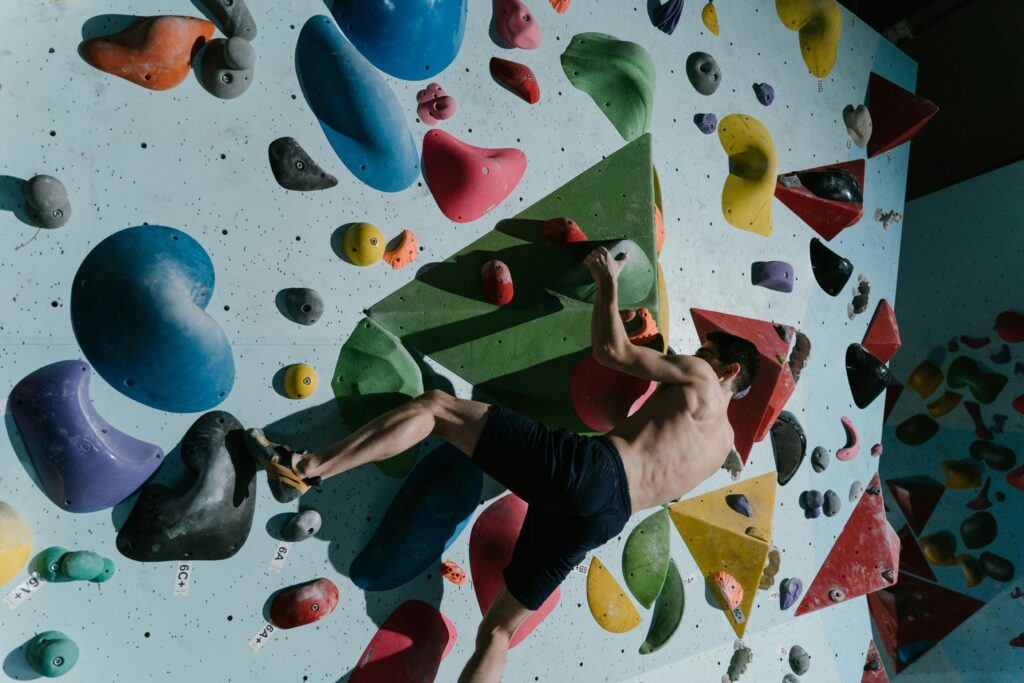
Introduction
Bouldering is one of the most exciting and accessible forms of climbing. Unlike traditional climbing, it doesn’t require ropes or harnesses. Climbers tackle short, but challenging routes, called “problems,” on natural rock formations or artificial walls. It’s all about strength, technique, and problem-solving. Let’s take a closer look at bouldering and what makes it so thrilling.
|
What is Bouldering?
In bouldering, climbers scale short, steep walls—usually no taller than 20 feet. The routes are often tricky and demand precise movement. Since the climbs are short, climbers use minimal gear—just climbing shoes, chalk, and a crash pad for safety. The goal is to reach the top of the problem in as few moves as possible. It is all about strength, flexibility, and creative problem-solving. The shorter climbs might look easy, but they can be just as tough, if not tougher, than longer routes.
|
The Mental Challenge
Bouldering isn’t just physical; it’s mental too. Before starting a climb, climbers carefully examine the wall. They look for handholds, footholds, and the best path to take. This process is called “reading the problem.” It’s like solving a puzzle. A single wrong move can make the difference between success and failure. That’s part of what makes bouldering so exciting. Climbers constantly push their limits, trying new moves and techniques to solve each problem.
|
Different Types of Problems
There are different types of problems in bouldering. Some are overhung, meaning the wall leans back, which makes climbing more difficult. Others are slabby, with less steep angles, requiring climbers to focus on balance and precise footwork. The difficulty of the problem is graded, often using systems like the V-scale or Fontainebleau scale. These grades help climbers gauge the challenge and push themselves to tackle more difficult problems.
|
The Physical Side
This type of climbing is a full-body workout. It requires upper body strength for pulling up, core strength for stability, and leg strength for pushing off the wall. Flexibility is important too, as climbers need to twist and stretch their bodies into odd positions. The beauty is that it tests multiple aspects of fitness in one climb. Climbers often have to use their brains as much as their muscles to make every move count.
|
Why People Love Bouldering
Bouldering appeals to people of all skill levels. Beginners can start on easy problems and gradually work their way up. For experienced climbers, it offers a chance to work on technique and strength. It’s also a social activity. Climbers often share tips, encourage each other, and work together to solve difficult problems. Whether indoors or outdoors, bouldering offers a fun and supportive environment for climbers.
|
Indoor vs. Outdoor Bouldering
Bouldering can be done both indoors and outdoors, and each has its appeal. Indoor climbing gyms offer a controlled environment with consistent conditions. They’re perfect for training and trying out different types of problems. On the other hand, outdoor brings the excitement of nature. Climbers venture into forests, mountains, or rocky areas to scale natural rock formations. As well as offers a sense of adventure and a connection to the outdoors that’s hard to replicate indoors.
|
The Growth of Bouldering
Bouldering has become incredibly popular in recent years. Many climbing gyms have added specialised walls, making the sport more accessible to everyone. In fact, it was included as an event in the Tokyo 2020 Olympics as part of the combined climbing competition. This recognition has helped bring the sport to a wider audience. More and more people are discovering the fun and challenge of bouldering, whether they’re seasoned climbers or complete beginners.
|
Conclusion
Bouldering is a dynamic, engaging sport that challenges both the body and mind. Whether you’re scaling indoor walls or exploring outdoor crags, it offers something for everyone. With its combination of strength, technique, and problem-solving, it’s no wonder that bouldering is gaining more fans around the world. So, whether you’re a first-time climber or a seasoned pro, bouldering is definitely worth trying. You might just find yourself hooked.

Excellent read!